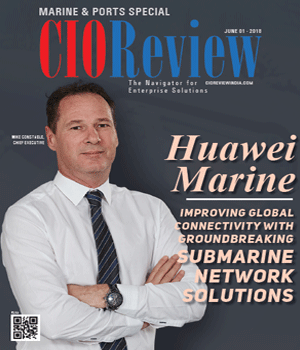Be an Innovator, be the solution
Glenn Keller, Director IT, CountryMark | Wednesday, 25 July 2018, 10:34 IST
 Large reserves and a glut of supply are great news for energy-hungry consumers of petroleum products but the resulting low prices make for a challenging environment for Oil and Gas I.T. leaders.
Large reserves and a glut of supply are great news for energy-hungry consumers of petroleum products but the resulting low prices make for a challenging environment for Oil and Gas I.T. leaders.
With capital in short supply and continuing needs for environmental compliance and access to less expensive crude, it’s tempting to roll into cost-cutting mode. But cutting costs is only a small part of the problem when a commodity business faces downward price pressures. The job of the Information technology executive is not only to run the business efficiently on a day to day basis but also to help position the business for the future through the effective use of existing and emerging technologies.
But getting capital and even sustaining an operating budget can be difficult for functional areas that are seen as “back office support” or “administrative”. We While most modern executives no longer question the value of the Information Technology function to their organizations, many still don’t understand what goes on in our areas And that is an enormous problem.
Here are four things you must undertake now to change that:
1) Exercise Total Transparency: No one wants to do this. It’s hard, it’s boring, and you might have to unveil some pet items that could be challenged. But unless you do this, expose your detailed costs, resource allocations, project pipeline and strategy you have no chance of being understood. It can be scary because you are unveiling your operations warts and all. But trust me, executives are more likely to invest in things they understand.
2) State Your Change Initiatives in Business Terms:“Leveraging the Cloud”, or something similar, are buzz-phrases and do not speak to what you are doing for your business. “Focusing on Core Services”, for example, is something that other business leaders will lock onto. They will undoubtedly be curious as to what those “core services” are. So now you have engagement and dialogue with just a wording change.
3) Look for the Win-Wins: There are many opportunities in our area to reduce costs while increasing functionality. Nothing is more satisfying to a CEO than realizing you have improved service levels while decreasing operating costs. Just make sure you crow about it.
4) Stay in Front of Technology: Technology innovation does not have to come from the Information Technology department, but as a tech leader you should be the one unveiling new, potentially game-changing technologies to the executive team. DO NOT make the mistake of waiting until you have a use case. Your colleagues may not understand the technology as well as you do, but once you have given them a sufficient overview, they will begin to think of applications for it within their areas. Okay, so now that you are understood, valued, and seen as a “player”, what can you do in the current operating environment? One thing is certain: if you do not attempt to change your operating model, all of that transparency is going to blow up in your face. You need to do something. But what? Here are three broad categories of actions you should be taking:
1) Separate Commodity Services from Value Add: This does not mean separating “new” from “legacy” or “development” from “support”. Ask the finance team during year-end close how important their ERP support team is. Rather it means looking for those things that can best be done by a 3rd party, have become a commodity, and upon which you can exert price pressure. Data Center Operations, Network Services, and HelpDesk are areas that bear looking at among others. Better yet, if you choose your vendors wisely, you may wind up with service improvements for less spend.
2) Bulk up Your Business Analysis Practice: You want people embedded in every facet of your enterprise. SupplyChain? You need to be experts in Demand Planning and Production Scheduling. Finance? I once led an I.T.team that could close the company’s books and generally manage the cash. It was because they were good. It was also because I chose well. For business analysts, the technology bits of I.T. can be the easier parts to teach. Don’t be afraid to hire accountants and plant managers onto your I.T. team.
3) Bring the Bling: Either you or someone from your team needs to be a bit of a futurist and spend time understanding the latest technology trends. You need to narrow those down to the most likely and spend a bit of time understanding the threat/opportunity equation. If you find a use-case, that’s great. However, that’s not always for you to do. Drones, Internet of Things and Virtual Reality, all are proving to have application in the Oil and Gas industry. If you are not steeped in these already you need to be. Despite challenging times, opportunities exist for forward-looking I.T. departments. You can be seen as just another functional leader clamoring for scarce capital and try to preserve your empire Or you can be seen as the solution. Scarcity is not the enemy of innovation, in many cases, it is scarcity that breeds innovation. Be an innovator. Be the solution.
CIO Viewpoint
Relying On Technologies To Transform Data Into...
By Mark Ohlund, CIO & Sr. V.P, Armada Supply Chain Solutions
Data Mining, Classification, And Clustering:...
By Pankaj Dikshit, SVP (IT) at Goods and Services Tax Network
Logistics Next With New Digital Age Technologies
By Sandeep Kulkarni, Head – IT at Panasonic India Pvt Ltd
CXO Insights
Changing The Status QUO - How Data And...
By Steven Little BSc. (Hons) FRICS MIAM, Director – Surveying and Asset Management, WYG Group
Next-Generation Data Warehouses
By Gautam Gupta, Vice President Enterprise Solutions, Yash Technologies
Supply Chain & Manufacturing: A Prescription...








